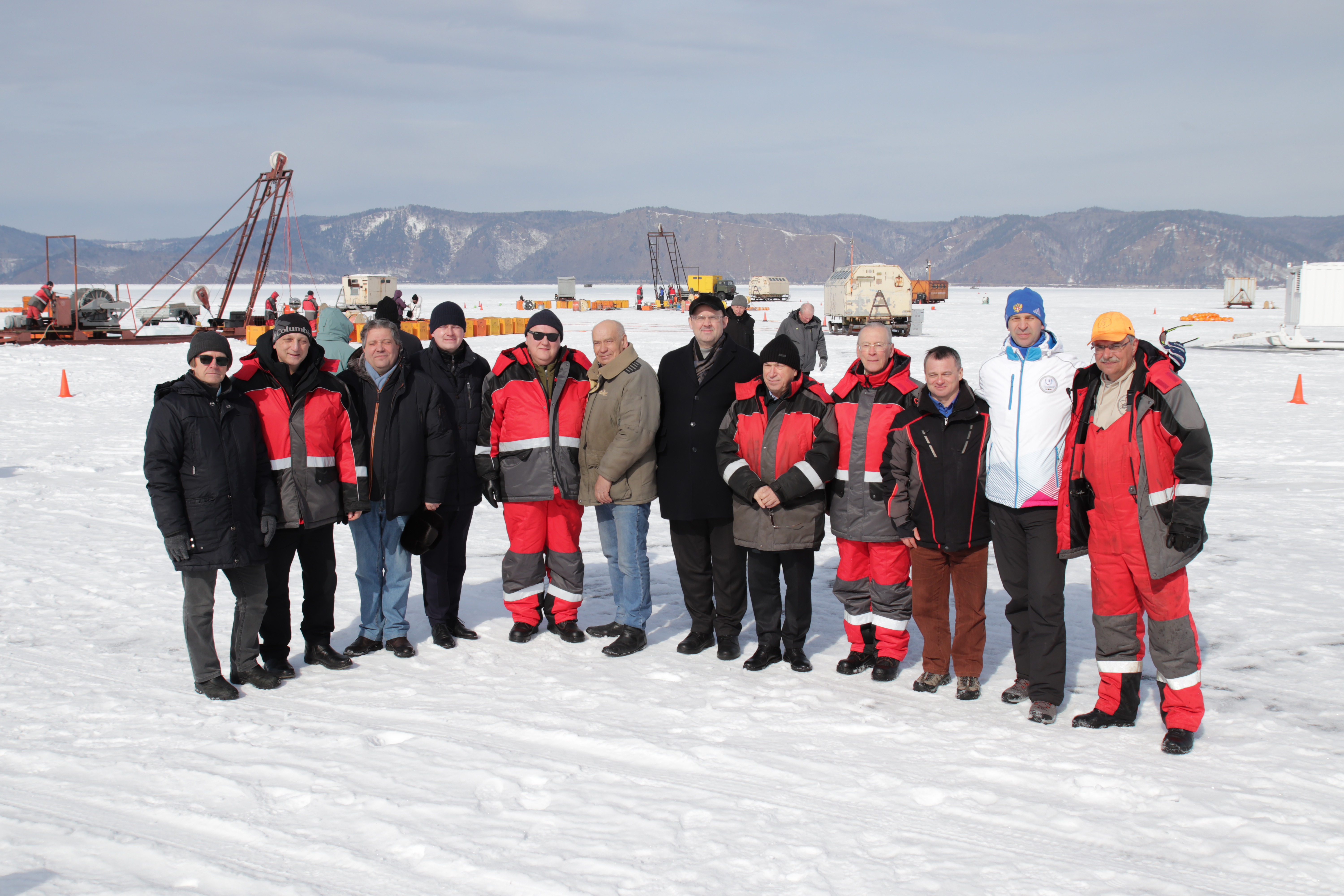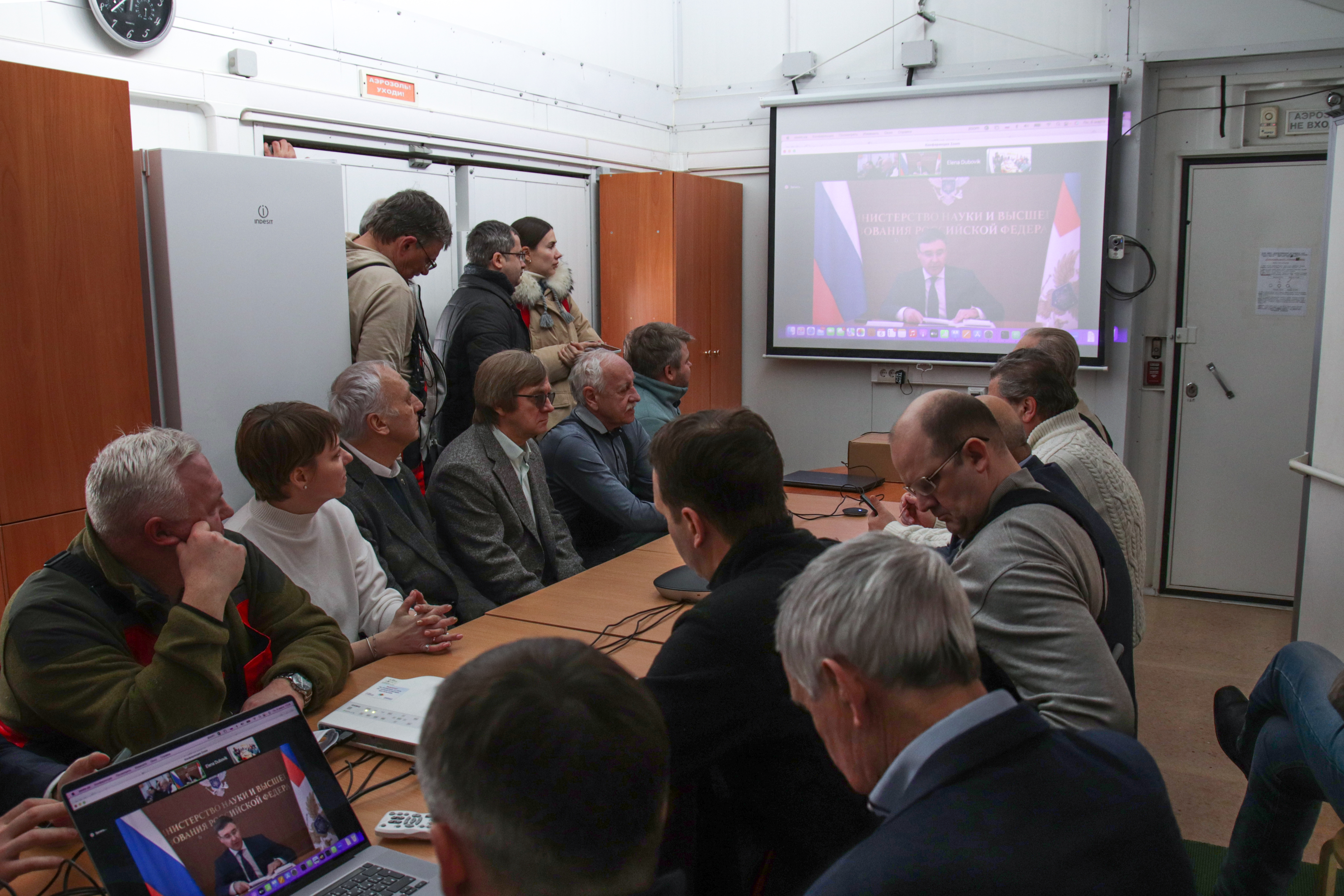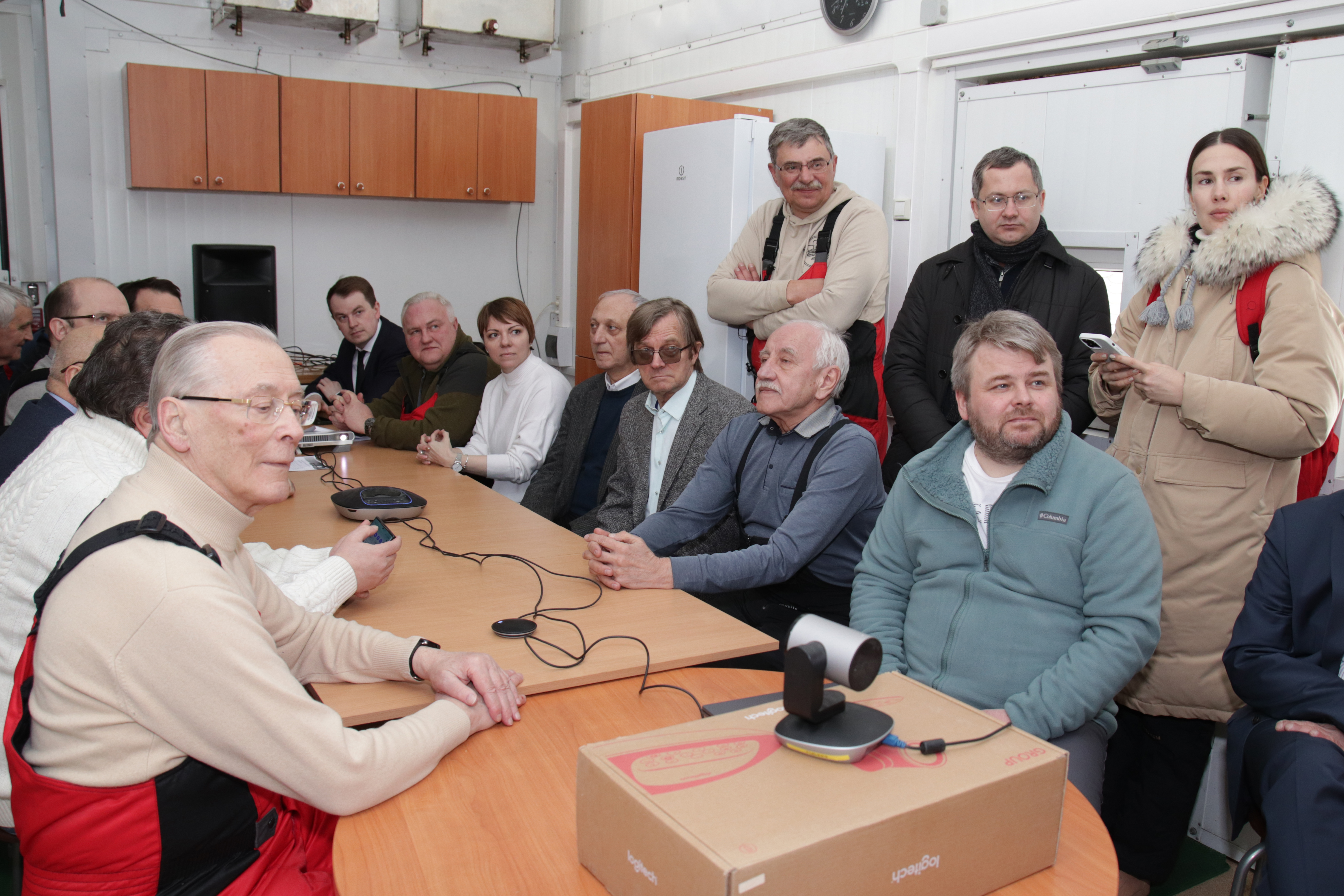JINR and eight research institutes and universities of Russia joined together to develop Russian neutrino programme
Media, 07 March 2023
On 6 March, Minister of Science and Higher Education of Russia Valery Falkov met with representatives of eight leading scientific institutes and universities of Russia, as well as the Joint Institute for Nuclear Research. The meeting took place at the Shore Centre of the neutrino telescope on Lake Baikal. The participants discussed the establishment of a nationwide development programme in neutrino physics and astrophysics and the results and prospects for the development of the Baikal deep underwater neutrino telescope. In addition, they considered the intermediate results of the current expedition, during which the collaboration plans to install two new clusters of optical modules.
Minister of Science and Higher Education of Russia Valery Falkov said that the ministry is involved in the formation of a new research programme in the field of neutrino physics and particle astrophysics, which was discussed during the launch of the neutrino telescope on the ice of Lake Baikal in 2021. At the same time, the idea to join efforts of several scientific and educational organizations in the study of neutrinos of different nature was put forward. To conduct research on neutrinos and particle astrophysics in 2022-2024, the Ministry of Science and Higher Education of Russia allocated 18 million roubles annually to six scientific and educational organizations as part of the public contract.
“Today, within the framework of state policy, we focus on applied research and development, on the one hand. It is clear that concrete results of science and technology in general are in great demand in the economy today. On the other hand, in no case should fundamental research be overshadowed. We need to be very careful about the present groundwork, and vice versa, invest, support, and help,” Valery Falkov said.
The Joint Institute for Nuclear Research participated in the meeting on behalf of the international representative of the experiment.
“Since the previous meeting, the collaboration has expanded by three full-fledged members, thus uniting nine participants already”, JINR Director Grigory Trubnikov noted in his speech. “The Joint Institute has been a member of the Baikal neutrino collaboration for more than twenty years. But exactly ten years ago, a new era in the history of the Baikal Neutrino Telescope began, which was associated with an entirely new level of involvement of our Institute in this project. Since then, the neutrino telescope has been actively developing and the volume of it has reached half a cubic kilometre”.
Representatives of all organizations attending the meeting expressed their desire to participate in the national neutrino programme and in the Baikal-GVD Project in particular. A meeting is scheduled for April this year at the National Research Nuclear University MEPhI to continue discussing the national development programme in neutrino physics and astrophysics. The neutrino programme of Russia will unite many scientists, preserve the scientific potential of the country in this field of science and attract international partners.
“A network of advanced physical facilities, such as Baikal-GVD, can help Russia retain its unique human capital. At the same time, in order to be a serious competitor at a global scale and to get into the top five world leaders in the field of science, Russia needs the participation of international partners in its megascience projects. There is interest from China, Latin America, and European countries. There are two effective channels for involving these partners in joint projects. The first one is collaboration, which is formed together by scientific organizations under the coordination of JINR, the international scientific Centre in Dubna. The second is the state programme “Priority 2030″, which allows Russian universities to actively build international cooperation,” Grigory Trubnikov stressed.
The meeting participants discussed the results achieved in 2022 and the plans of the neutrino programme for 2023-2024. It was noted that neutrino astrophysics is at the forefront of scientific research. Competition is extremely high and it is important for Russian scientists to maintain their position as one of the leaders in this field. In order to do this, the effective volume of the Baikal Telescope should be increased to at least one cubic kilometre. To maintain this pace, it is necessary to put into operation at least two clusters annually. This will require the combined efforts of all participants in the Neutrino Programme of Russia.
Now the collaboration is undertaking another expedition on the construction of the telescope and has already reached the halfway point. More than 60 people are involved in research on the telescope, and about 30 are regularly present on the ice of Lake Baikal. During the expedition, the participants plan to install two new clusters of optical modules, three service buoy stations with calibration lasers, continue work on the development of a data transmission system via optical lines inside the facility, as well as lay two bottom cable lines of cluster power supply. By 2030, 8-10 more telescope clusters will be installed, which will ensure the registration of high-energy astrophysical neutrinos with an effective volume of up to 1 cubic km. This will allow Baikal-GVD to compete with IceCube (USA), KM3NeT (EU) projects, and projects developing in China and Canada. In addition, it is planned to develop microbiological studies of the benthos communities of Lake Baikal using genetic analysis methods by JINR and the Limnological Institute of the Siberian Branch of the Russian Academy of Sciences.
The telescope is already collecting physical data. On their basis, the project participants were able to confirm the presence of a neutrino flux of the astrophysical nature, previously detected by the IceCube neutrino telescope. The collaboration article with the first results of the search for astrophysical neutrinos in the Baikal-GVD Project was published in the high-rank scientific journal Physical Review D. It presents the results of measuring a diffuse neutrino flux of cosmic origin. The authors analysed data for the last four years and identified 25 candidate events for neutrinos of astrophysical nature. The scientific significance of this result lies in the fact that the existence of cosmic neutrinos is confirmed and that the parameters of the neutrino flux of two different experiments coincide within the limits of statistical and systematic uncertainties.
In Russia, five scientific and educational organizations joined their efforts to create the Baikal-GVD Neutrino Telescope, i.e. the Institute for Nuclear Research of the Russian Academy of Sciences, the D. V. Skobeltsyn Institute of Nuclear Physics of Moscow State University, Irkutsk State University, Nizhny Novgorod State Technical University, Saint Petersburg State Marine Technical University. Together with the Joint Institute for Nuclear Research, the collaboration includes the Comenius University in Bratislava, the Czech Technical University in Prague, and the Institute of Nuclear Physics of the Ministry of Energy of the Republic of Kazakhstan.
The meeting was attended by representatives of the Joint Institute for Nuclear Research, the Institute for Nuclear Research of the Russian Academy of Sciences, Irkutsk State University, the Lebedev Physical Institute of the Russian Academy of Sciences, the National Research Nuclear University “MEPhI”, the Skobeltsyn Scientific Research Institute of Nuclear Physics of Moscow State University, Novosibirsk National Research State University, Tomsk Polytechnic University, Kabardino-Balkarian State University.
Photos: Irkutsk State University press office








